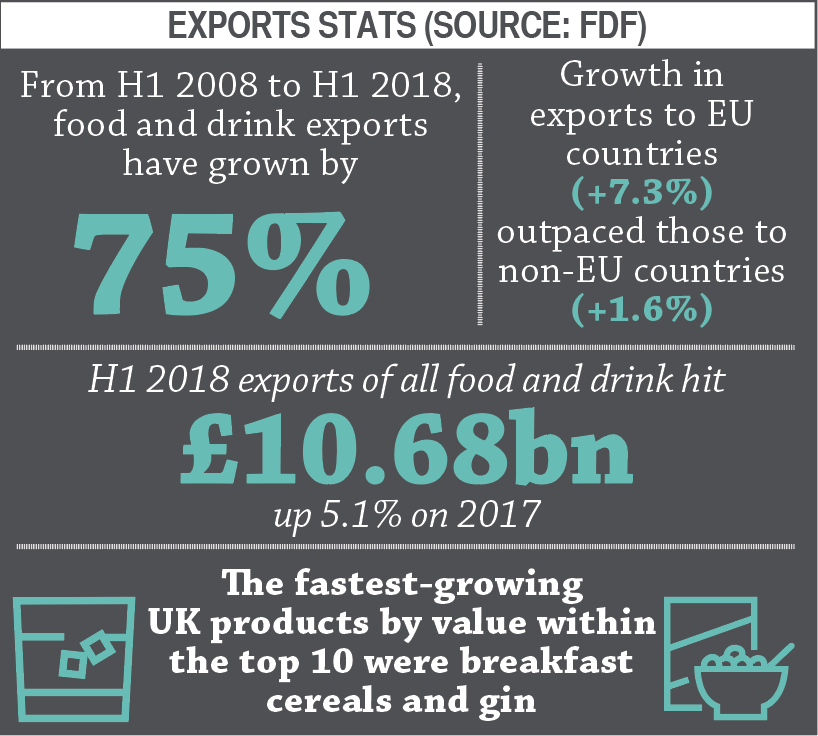Exports are becoming a key port of call for wholesalers. Martyn Fisher looks at the dos and don’ts
Although no wholesale-specific stats have been compiled in regard to exports, one thing I have learned in my regular travels across the UK to meet many of you is that exports have become a crucial part of your business.
 A shining example of this new approach is Manchester-headquartered wholesaler Rayburn Trading. The business currently exports its products to around 70 countries worldwide, specialising in Europe, and its commitment to worldwide sales was recognised when Rayburn received The Queen’s Award for Enterprise in International Trade. Exports account for around 45% of the business’ turnover. “We are proud that over the 20 years since establishing our exports division, we have been able to firmly cement our place within the retail and wholesale industry internationally,” says Rayburn director Howard Goldman.
A shining example of this new approach is Manchester-headquartered wholesaler Rayburn Trading. The business currently exports its products to around 70 countries worldwide, specialising in Europe, and its commitment to worldwide sales was recognised when Rayburn received The Queen’s Award for Enterprise in International Trade. Exports account for around 45% of the business’ turnover. “We are proud that over the 20 years since establishing our exports division, we have been able to firmly cement our place within the retail and wholesale industry internationally,” says Rayburn director Howard Goldman.
However, the UK’s departure from the European Union (EU) casts a distracting and disorienting shadow over this burgeoning side of the market.
In this feature, we explore what it takes to become a shipshape UK-based wholesaler-exporter, and crystal-ball-gaze about what could affect trade over the next 12 months.
Salient advice
Rain Newton-Smith, chief economist at the Confederation of British Industry (CBI), recently noted that the volatility of sterling since the Brexit vote is having “some mixed effects for SMEs”. On the positive side, she notes: “You can see export orders are increasing, [and] you could argue that the weaker exchange rate is making some of our businesses feel like they need to be more competitive.”
It does not matter what products form part of your range, export opportunities abound on a wide variety of items. JW Filshill International, which trades under the name Craft Beer Clan of Scotland, exports premium alcohol to 12 different countries.
Read more on JW Filshill: JW Filshill hits £158m turnover
Led by the growing demand for ethnic foods, especially across Europe, London-based wholesaler Wanis exports to more than 25 countries around the world, accounting for 10% of trade. “The primary drivers for us have been the growing strength and equity of our flagship brands which include Tropical Sun, Africa’s Finest, DeVina, Aani and Village Pride,” says marketing manager Jag Singh.
Filshill’s group commercial director, Chris Miller, lists his three top tips for UK-based FMCG wholesalers exporting their products as patience, diligence and ambition.
Singh, meanwhile, says his business prides itself on the relationships it has developed with export customers, which are built on “trust, mutually-beneficial relationships, and operating nimbly to adapt and respond to local needs”.
For Rayburn’s Goldman, more specific factors need to be considered. “Always make sure payment terms are established, as these play a significant role in international business and are, of course, a major part of the sales contract,” he says. “Make sure you have all the correct paperwork, too, and, also, double check everything with the customer before orders are shipped.”
In the flesh
As a business that started exporting its wares 20 years ago, Rayburn’s biggest challenge at the point of inception no longer applies – that being the lack of widespread internet usage to raise awareness of the business and its product range. While a user-friendly, good-looking and detailed website which ranks highly on search engines such as Google and a strong social media presence now all play their part in getting your export operation up and running or working to grow your sales, one of the ways in which Rayburn got its export division going – taking part in trade shows across the world – is still as relevant today as it ever was. The business has since opened a showroom at its HQ that displays Rayburn’s 3,500 products for clients from around the world to come and check out.
Filshill, meanwhile, faced challenges with resources and time when setting up its export operation – in particular, around “putting in place a flexible working process and admin system to manage expectations of supplier and importer and third-party service providers”, Miller says.
Sarah Malone, senior economic analyst at the Food and Drink Federation (FDF), points out that international trade in food and drink is “more complex and highly regulated” than most other sectors, meaning that food and drink exporters face unique challenges that require specialist support.
 “While there is no shortage of existing activity being undertaken by trade associations, the private sector and government to grow food and drink exports, the support available is highly fragmented and not accessible for businesses in all UK regions,” says Malone.
“While there is no shortage of existing activity being undertaken by trade associations, the private sector and government to grow food and drink exports, the support available is highly fragmented and not accessible for businesses in all UK regions,” says Malone.
She adds: “FDF believes that there is still a need to improve the availability and scope of dedicated specialist support in the UK and in overseas markets, and has developed sector deal proposals as part of the UK Government’s Industrial Strategy activity to boost specialist export support.
“This includes an online food and drink export portal to help exporters access available support, additional provision of market research and increased in-market support in key overseas markets.”
Outlook
FDF is positive about the road ahead, based on overseas demand for goods from the UK. Malone says: “We have seen that food and drink exports rise consistently year on year due to strong and growing overseas demand for our safe, high-quality food and drink. We have set an ambition to grow exports of branded food and drink products by a third by 2020 which would achieve a total value of £6bn.
“Strength in export growth to EU and non-EU countries highlights that we are on track to reach our target by 2020. Based on average annual growth between 2007 and 2017 of 9%, we expect that exports of branded products could reach £7.5bn by 2020, subject to the outcomes of the Brexit negotiations.”
As for what wholesalers think, Filshill’s Miller’s outlook for the export picture for the next 12 months is resoundingly confident, due to “craft beer and especially craft spirits being high-trending categories and demand in the market being consumer-driven”.
Wanis’ Singh is equally sanguine about what lies in store. “While Brexit has created a lot of uncertainty and has already had an impact on our business, we are taking a positive view; change is good,” he says. “Our exports business is booming due to the weaker pound. Additionally, the UK is the leader in ethnic and world foods across Europe, which has meant growing demand for our product catalogue from across the continent.”
However, Amir Chaudhary, director at Birmingham-based wholesaler Indus Foods, says the outlook for the next year is “risky”, due to ongoing uncertainty over Brexit.
Rayburn’s Goldman shares these concerns, but thinks there could be a silver lining: “Hopefully, if the UK successfully secures its ultimate aims, exporters will still be able to trade with the EU as they currently do,” he suggests.
Focus on: Indus Foods

Birmingham-based wholesaler Indus Foods now exports to more than 10 countries, mostly in Europe, and this trade accounts for 7% of the business’ turnover.
Indus director Amir Chaudhary pulls out three areas that need to be considered when embarking upon an exports operation: “Local knowledge and understanding is very important and you need to ensure you have people who can go out to your target market to verify leads,” he says.
“In addition, understanding what your competitors offer is key as it will not always be about price. And if selling food products, be sure not to forget about local country regulations, such as language, nutrition
and so on.”
The initial point about verifying leads was the biggest challenge Indus faced when setting up the export operation, and, understandably, this might be the concern of anyone yet to try their hand at exporting goods.
But Chaudhary re-stresses the point about overcoming this problem by employing staff willing to travel and develop local knowledge.
Top tips Food & Drink Federation (FDF)
1. Is now the right time? Determine if your business is capable of dealing with
the demands of exporting. Read our Food and Drink Export guide (on the FDF website) for the practicalities you need to consider when exporting.
2. Do your research. Make a shortlist and focus your research to understand routes to market. FDF’s quarterly Export Snapshot will provide indicators of the UK’s top food and drink export markets and the latest trends.
3. Speak to your trade association. Insight from FDF, Food & Drink Exporters Association and the Department for International Trade will help you establish whether your company is ready to export and direct you to the relevant services.










